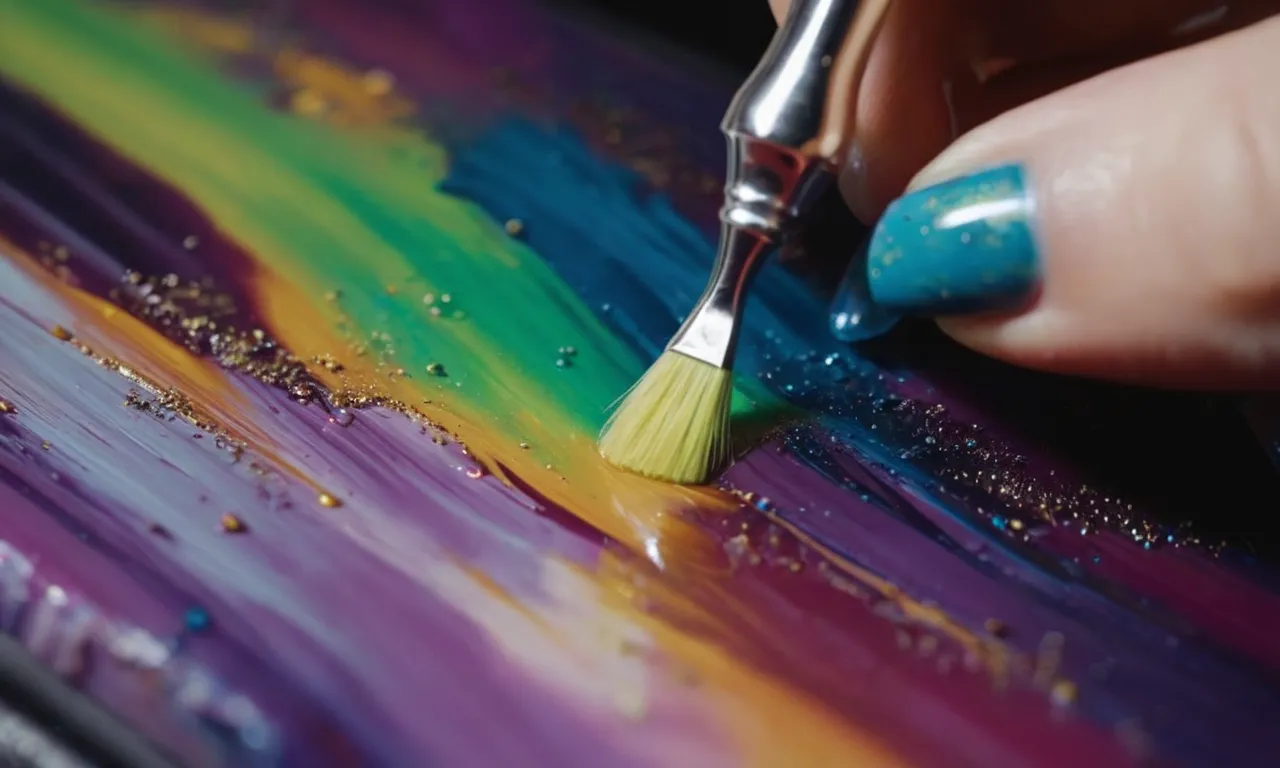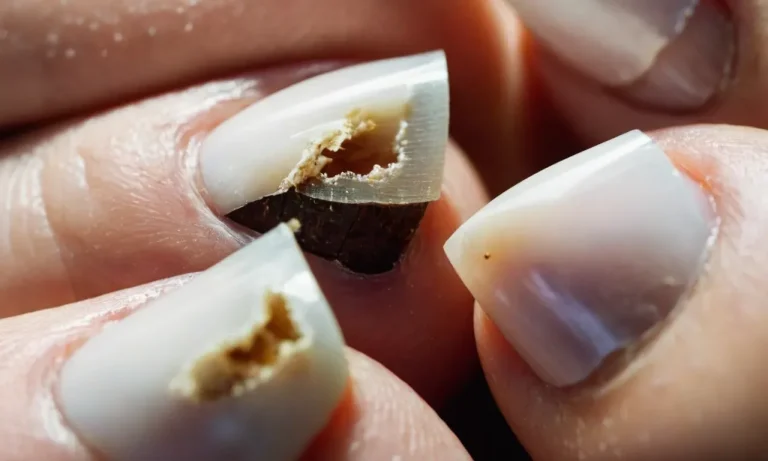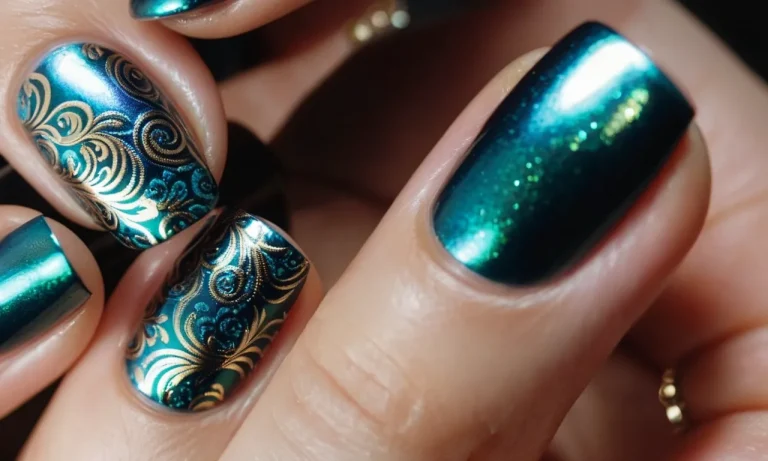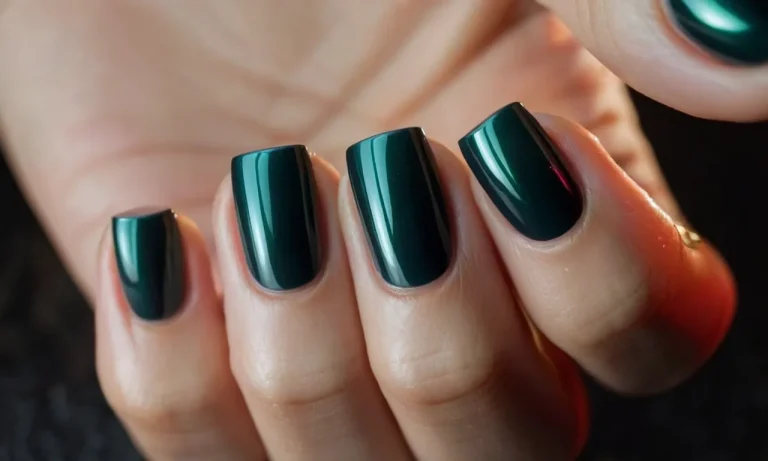Can You Put Nail Polish Over Acrylic Paint?
If you enjoy decorating your nails with fun colors and designs, you may be wondering if you can apply a coat of nail polish over acrylic paint. The answer depends on several factors that impact how well the nail polish will adhere to the acrylic.
Here’s the quick answer: yes, you can put nail polish over acrylic paint as long as the acrylic paint layer is fully dry and sealed before applying the nail polish. The key steps are to allow the acrylic paint to fully dry, apply a top coat sealant, then lightly buff the surface before adding your nail polish for the best durability and longevity of your nail art.
Ensure the Acrylic Paint Layer is Fully Dry
When working with acrylic paint, it’s crucial to let each layer dry fully before adding anything on top. This prevents issues like cracking, peeling, bubbling, and more. For nail art using acrylic paints underneath nail polish, the same rules apply.
Allow at least 24-48 hours of drying time
Acrylic paint needs sufficient time to cure and harden before applying nail polish or any other products. The drying times depend on factors like:
- Thickness of the acrylic paint application
- Humidity and temperature
- Ventilation
As a general guideline, allow at least 24 hours for thinner paint applications. For thicker paint or multiple layers, give 48 hours or more of drying time. Even if the paint feels dry to the touch, there still may be moisture underneath the surface that needs to fully evaporate.
Thicker applications may require longer drying times
The more acrylic paint applied, the longer the drying time needed. With multiple coats or dense applications, moisture becomes trapped. If nail polish is added too soon, this moisture could interact with the polish, causing bubbles, cracks, peeling, and other issues. Allow extra drying time for:
- Multiple coats of acrylic paint
- Thick impasto paint techniques
- 3D acrylic paint designs
- Acrylic paint mixes with mediums or gels
For very thick acrylic paint applications, it’s sometimes best to allow 72 hours or more before adding nail polish. Test the surface by touching gently before applying polish. If the paint still seems at all tacky or cool to the touch, give it more time.
Rushing the acrylic drying time risks damaging all your hard work. But with sufficient drying time, you can safely achieve durable, long-lasting nail art using acrylic paint under nail polish.
Apply an Acrylic Sealer or Top Coat
Seals in the acrylic paint and provides a smooth surface for polish
Applying an acrylic sealer or top coat over your acrylic painted nails is a great way to seal in the paint and prepare the surface for nail polish. An acrylic sealer creates a smooth, even surface that allows nail polish to glide on easily and last longer without chipping or peeling.
There are a few benefits to using an acrylic sealer or top coat:
- Creates a protective barrier over the acrylic paint.
- Seals in the acrylic paint so it doesn’t chip or flake off prematurely.
- Provides a smooth, even surface for nail polish application.
- Allows nail polish to adhere better and last longer.
- Prevents nail polish from staining or discoloring the acrylic paint underneath.
- Reduces the chance of bubbles or imperfections when applying nail polish.
When browsing sealers and top coats, look for a fast-drying formula made specifically for use with acrylic paint. The sealer should dry quickly and leave a non-sticky, even finish. Avoid oil-based sealers, as these may not fully cure and could interact poorly with nail polish.
A water-based, acrylic-friendly formula is best.
Quick-dry sealers work best
Look for acrylic sealers and top coats that are labeled “quick-dry” or “fast-drying” on the bottle. These formulas will dry down completely within a minute or two, allowing you to quickly move on to the nail polishing step.
Slow-drying sealers take more time to cure and feel tacky, which can lead to smudging or denting when you apply nail polish too soon. Quick-dry sealers form a hardened, resilient finish that is ready for polish application almost immediately.
Popular quick-dry top coat brands to look for include:
– Seche Vite Dry Fast Top Coat
– Essie Speed Setter Quick Dry Top Coat
– Sally Hansen Insta-Dri Fast Dry Top Coat
– OPI Rapidry Top Coat
Avoid thick, gel-like acrylic sealers, as these take much longer to fully cure. Thin, fast-drying water-based formulas offer the best performance. Let each coat of sealer dry for at least 60 seconds before applying the next layer. Two to three thin coats ensures complete, even coverage.
Once the sealer has fully dried, you’ll have a smooth canvas ready for dazzling nail polish!
Gently Buff the Nails Before Polish Application
Creates a slightly rough surface for better polish adhesion
Before applying nail polish over acrylic paint, it’s important to gently buff the nails. Using a soft nail file or buffer, lightly go over the surface of the nails to create some micro-abrasions. This helps remove any glossy areas and creates a slightly rough texture that allows the nail polish to adhere better.
According to research from the Nails Magazine, nail polish bonds best to a roughened, porous surface rather than an ultra-smooth one. The tiny grooves provide more surface area for the polish to grab onto.
An added benefit is that buffing also removes any oils or product residues, ensuring a clean slate for polishing.
While acrylic paint also provides a textured surface, gently sanding first helps remove the top gloss layer and really primes the nails. This simple step makes a noticeable difference in how long your nail art manicure lasts without chipping or peeling.
Be careful not to buff too aggressively
However, be very careful not to over-file or buff too hard when prepping for nail polish. Aggressive buffing can actually damage the nails and thin out the layers of acrylic paint. The goal is just to create some microscopic ridges, not scrub off lots of material.
Use a light hand and smooth, even strokes when running the nail file or buffer over the surface. Apply the minimal amount of pressure needed to lightly scuff up the glossy paint. It should only take a few passes over each nail to properly prepare the surface.
Pay attention so you don’t buff all the way down to the natural nail bed. That could expose you to infections or cause the paint to lift up from the edges. Go slowly and check the nails frequently when filing to monitor your progress.
For overly aggressive filing, the average nail can lose up to 1 mm thickness after just 60 strokes. So aim for less than 30 gentlebuffing strokes per nail to avoid excessive wear.
Proper nail care also involves using a high-quality buffer and filing in one direction. Buffing back and forth can be harsh on the keratin fibers. With some careful buffing, you’ll have the perfect gritty, matte finish for maximizing nail polish adhesion over acrylic paint.
Apply Your Choice of Nail Polish
2-3 thin coats is ideal for full coverage and durability
When applying nail polish over acrylic paint, it’s best to use 2-3 thin coats for optimal coverage and lasting results. Thicker coats tend to get gloopy and take longer to dry, which can cause chipping or peeling.
According to beauty experts at Prestige Lacquer, thinner coats form a smooth, even layer that adheres better to the acrylic underneath.
Aim for small, light brush strokes as you sweep the polish across your nail. Let each thin layer dry completely before adding the next – usually 2-3 minutes between coats does the trick. The final result will be a glossy, durable manicure that should stay chip-free for up to a week with proper aftercare.
Allow each coat to dry in between application
It’s crucial to let each layer of nail polish dry thoroughly before adding another coat. Most standard polishes take 2-3 minutes to set. Working one nail at a time can help stagger the drying process. Apply a coat to one nail, work your way across to the others, then loop back to the first for the next layer.
If you apply coats too quickly, it can cause bubbling, dragging, and uneven texture. Having patience allows each layer to form a smooth, solid base for the next. Following this simple rule is key for avoiding chips and smudges, yielding a flawless, long-lasting manicure.
Set a timer if needed to keep yourself on track. The wait is worth the perfect polish payoff!
Finish with a Top Coat for Extra Shine and Protection
Applying a top coat is an essential final step when painting your nails with acrylic paint. A quality top coat provides a smooth, glossy finish and helps protect your nail art from chips, scratches and smudges. Here are some tips on using top coats over acrylic nail polish:
1. Let the Acrylic Paint Dry Completely
Before applying a top coat, make sure the acrylic paint is 100% dry. Most acrylic paints take 1-2 hours to fully cure. Rushing this step can cause the polish underneath to smear or dent when you apply the top coat. Be patient and allow adequate drying time.
2. Use a Fast-Drying Top Coat
Look for a top coat formula that dries quickly, such as a fast-drying spray or no-light gel top coat. These will seal and smooth the acrylic paint without the need for UV lamps. Quick-drying top coats help prevent smudges when layering on top of acrylic.
3. Apply Thin, Even Layers
When applying the top coat, use thin and even strokes over the surface of the nail. Thick or uneven layers may end up looking gloopy. Going slowly and lightly will provide the best shine. For spray top coats, hold the can 6-8 inches away from the nail and apply 2-3 thin layers.
4. Wrap the Tips
To help prevent chips and peeling, gently wrap the top coat over the tips of the nails. This seals the very edge of the manicure. Avoid totally flooding the cuticles with top coat.
5. Reapply Every Few Days
Top coats wear away over time. Reapply a fresh glossy top coat every 2-3 days to keep your acrylic manicure looking freshly-painted. This helps compensate for the less flexible nature of acrylic paint.
Using a good top coat is key for making acrylic nail polish designs look salon-perfect. The top coat evens out the painted surface, adds mirror-like shine, and acts as a protective barrier against wear. Choose a fast-drying top coat and apply it smoothly over dry acrylics for a flawless finish.
Conclusion
In summary, you can successfully apply regular nail polish over acrylic paint on your nails if you ensure the acrylic layer is fully cured, seal it properly, gently buff the surface, and apply polish coats carefully.
This allows you to get creative with combining acrylic paint designs and colorful nail polish for stunning nail art manicures. Just be patient during the preparation steps for best results. Happy painting and polishing!







